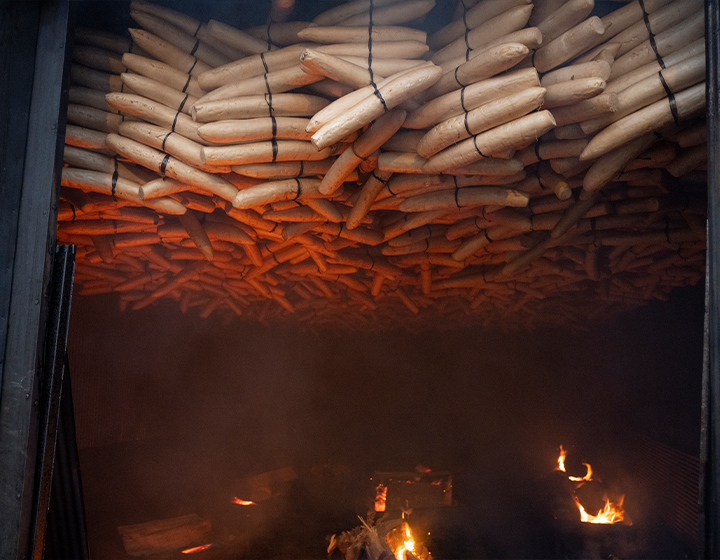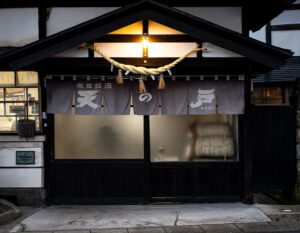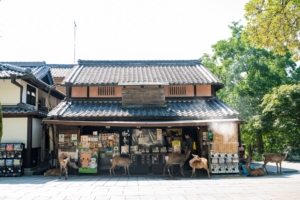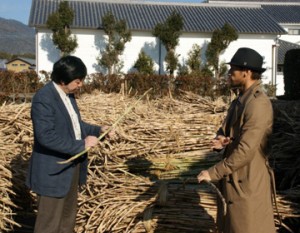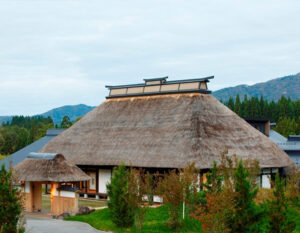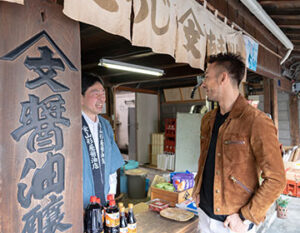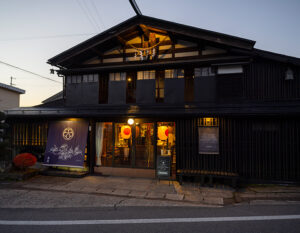Iburi gakko” was born out of nostalgia for iburi pickles.
Yuzawa City is surrounded on all sides by mountains and is known for its heavy snowfall.Winter comes early and lasts long.It is said that this has given birth to a unique culture of making pickles.The raw material for Iburi Gako is white-necked local daikon radish harvested in the fall.It is not suitable for raw consumption because it is long, pure white, tight, and spicy with little water content, but it is the best material for iburigakko.The Yuzawa area in the southern inland region of Akita Prefecture has an early snowfall and very few hours of sunlight due to its mountainous location.When trying to make takuan pickles, a common winter preservation food, it was necessary to hang the daikon radishes from beams inside the house to dry them, as drying them in the sun was not enough to remove the water content.A sunken hearth was located below, and the fire and smoke took the place of the sun.The strong acid from the smoke sterilized the surface of the daikon and improved its preservation.The strong acid from the smoke sterilized the surface of the daikon and enhanced its preservation.Yoshinobu Kimura, the representative of Kimuraya in Ogatsuno, says with a smile, “Iburi pickles may be the product of such a coincidence.

Iburi pickles are said to have originated as far back as the Muromachi period (1333-1573).The method of pickling varied, and each household had its own taste, which was passed down from generation to generation.However, with the spread of wood-burning stoves in the Showa period (1926-1989), the hearths in many homes decreased and iburi-zuke disappeared.In 1963, Kimuraya established a pickles shop in Yuzawa, taking advantage of the climate and ingredients suitable for making pickles.At first, Kimuraya made pickles of wild vegetables and kasuzuke (pickles with sake lees), but then Kimuraya began to receive calls from people who longed for the tsukemono pickles that had disappeared.Kimuraya began the challenge of recreating and commercializing the family tradition of iburi-zuke.From there, he went through many days of trial and error in order to recreate the fire in the sunken hearth.He discovered that by burning carefully selected hardwoods and drying them over an open fire, he could create a sweet smoky aroma that reminded him of the nostalgic hearth fire, which is unique to Iburi pickles.The smoked daikon is then quickly dipped in rice bran, salt, and pomelo sugar.The Iburi pickles, which are a Kimuraya family tradition, are named “Iburi Gakko” because pickles are called “Gakko” in Akita, and have become a favorite of many people.

Western-style arrangement using “Iburi Goko
The use of coarse sugar for pickles is also a method unique to this area.Yuzawa City once had the “Innai Ginzan” (silver mine), which was said to be the largest silver mine in the East, and the area was prosperous in its own right, so it was easy to obtain sugar, which was a luxury item at that time.This situation helped the use of sugar in pickles, and it became a standard method of production in Akita.The same logic applies to both sugar and salt: osmotic pressure pushes water out of the daikon radish.The difference is whether the flavor is sweet or salty.Kimura says that the reason why people say that iburigakko is easier to eat than ordinary pickles is because the use of sugar gives it a mellower taste.
After pickling, the fish is matured for more than 60 days.When the lactic acid fermentation begins in the barrel, the sound of “kopopop, kopopop” begins to be heard.Finally, the Iburi Gako is ready.
Iburi gakko is now known throughout Japan as a representative flavor of Akita.Iburi gakko has its origins in the “simple taste.There are many delicious foods in the world.I would be happy if people could try something simple like iburigakko once in a while and feel nostalgia,” says Kimura.
Recently, many people have been trying various ways to eat iburigakko, such as with cheese, in risotto, and in ochazuke (rice with green tea).People who like Iburi gakko tell me, “It was delicious when I ate it this way,” he says.
Iburi gakko is a product of the unique environment of Akita’s inland region of heavy snowfall.This winter, too, it has been maturing in the cold snowy country, quietly waiting for its perfection.





